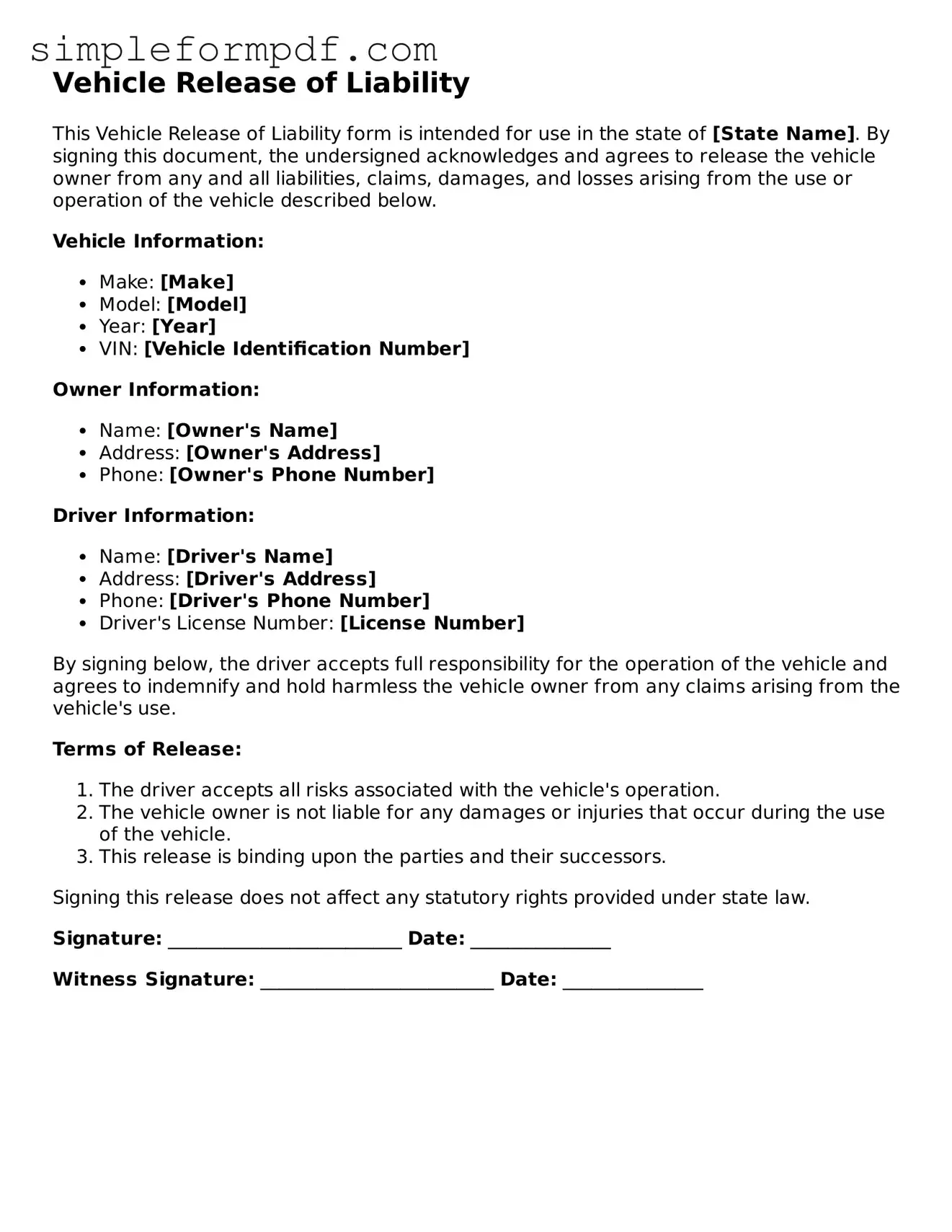Fillable Vehicle Release of Liability Template
The Vehicle Release of Liability form is a legal document that protects vehicle owners from potential claims arising from the use of their vehicle by another party. By signing this form, the individual acknowledges that they are assuming all risks associated with operating the vehicle, thereby releasing the owner from any future liabilities. Understanding this form is essential for anyone looking to safeguard their interests when allowing others to use their vehicle.
Ready to fill out your Vehicle Release of Liability form? Click the button below to get started!
Launch Editor
